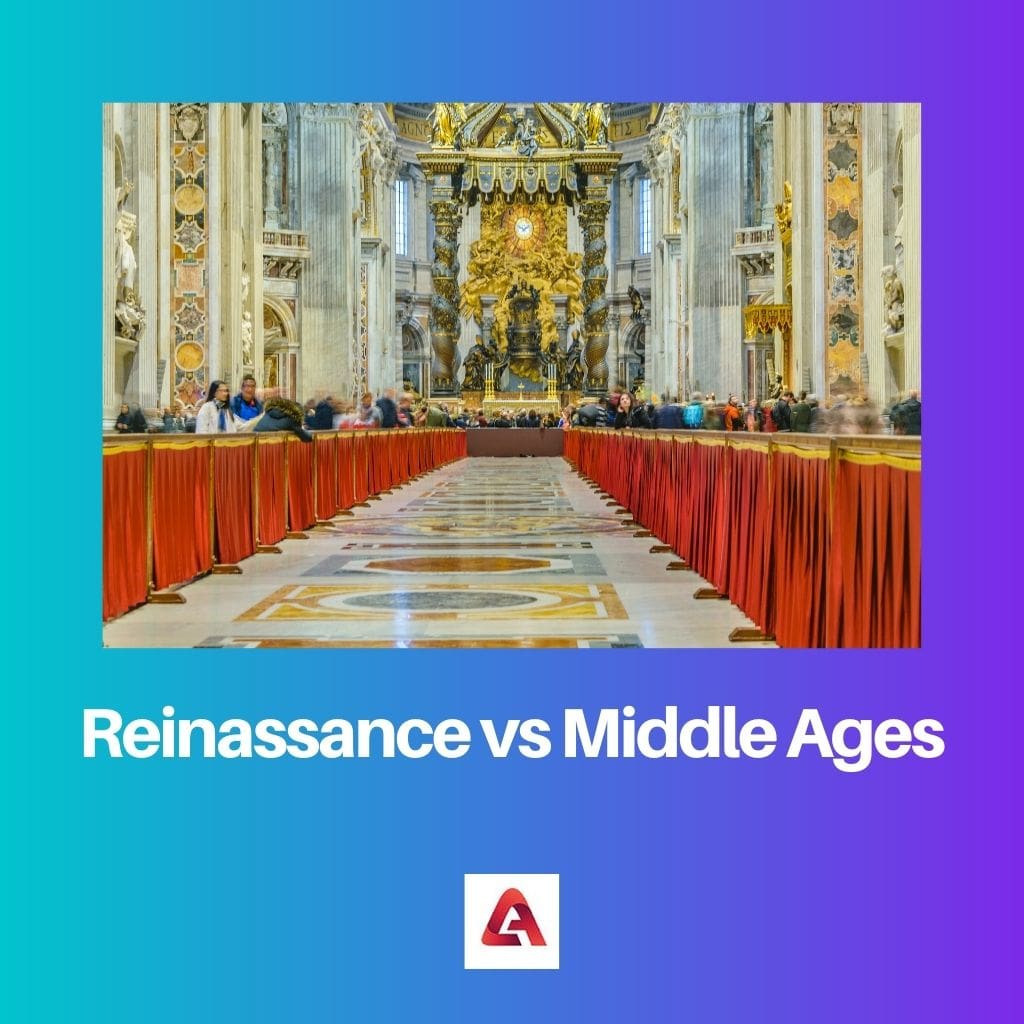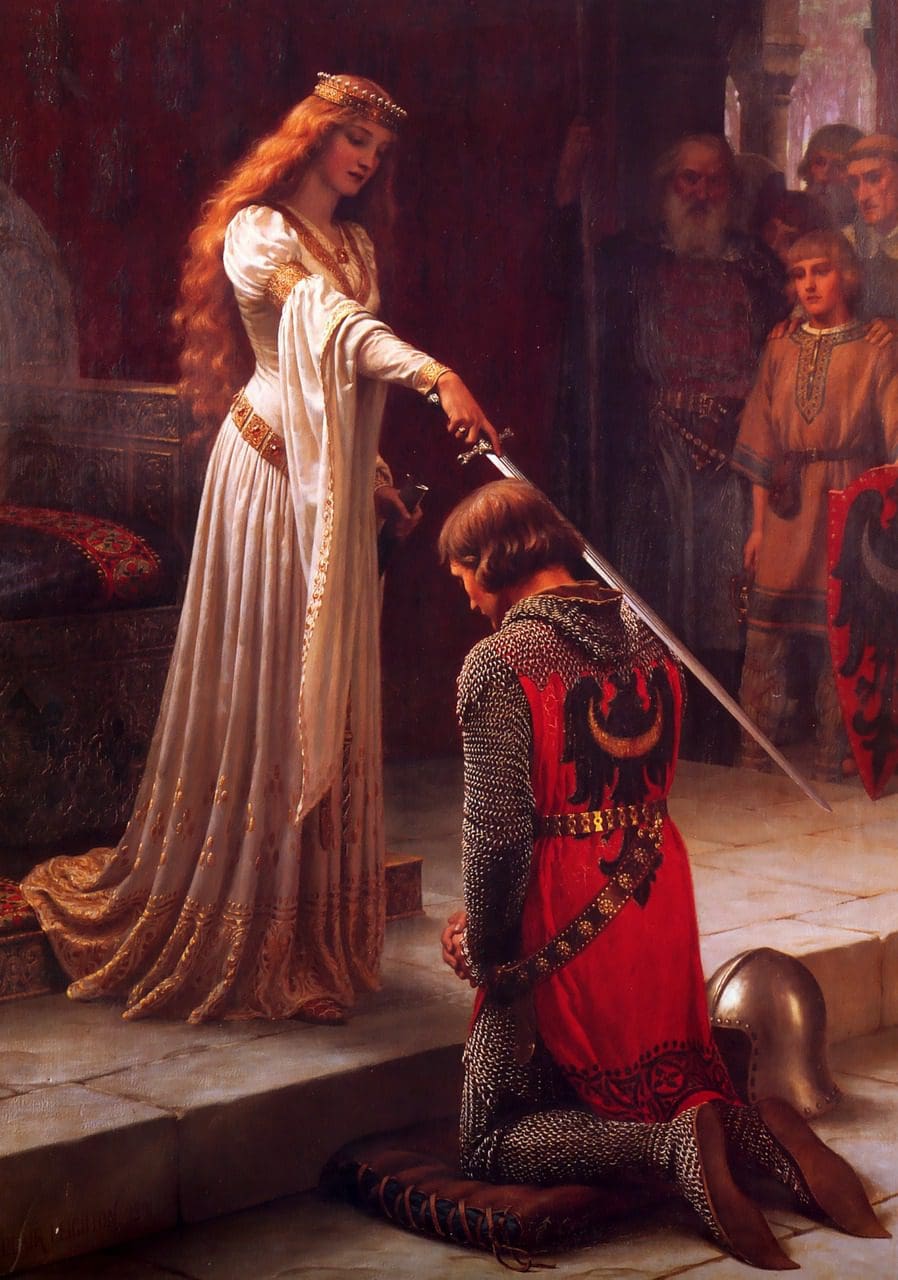Renaissance and Middle Ages are two different terms used to describe the events of European history. They have unique characteristics that distinguish them from each other. Chronologically, the Middle Ages preceded the Renaissance.
Key Takeaways
- The Renaissance was a cultural, artistic, and intellectual movement in Europe from the 14th to the 17th century, characterized by a renewed interest in classical learning and humanism.
- The Middle Ages, or medieval period, lasted from the 5th to the 15th century and is known for its feudal system, religious focus, and relative cultural stagnation.
- Both periods are essential to understanding European history, with the Renaissance marking a significant shift in art, science, and philosophy following the Middle Ages.
Renaissance vs. Middle Ages
The difference between Renaissance and Middle Ages is that the former was a cultural movement that facilitated the beginning of the modern era. On the other hand, the latter was an era in European history characterized by declines in economic vitality, population, and the size and prominence of cities. It is described as the Dark Ages of European history.

The term ‘Renaissance’ means ‘rebirth’ or ‘reawakening.’ It is evident from the term’s meaning that the period preceding it was characterized by stillness or slumber. This is precisely how scholars describe the Middle Ages.
Also known as the Dark Ages, the Medieval Period or the Middle Ages began in the 5th century and lasted till the 16th century.
Its beginning was marked by the decline of the Western Roman Empire, and its ending merged with the Age of Discovery and the Renaissance.
Renaissance, on the other hand, was a dynamic cultural movement between the late 13th and the early 17th century.
The epicenter of this movement was Italy, from where it spread to the rest of the European countries. It renewed interest in Classical (Greek and Roman) learnings and values.
Comparison Table
| Parameter of Comparison | Renaissance | Middle Ages |
|---|---|---|
| What is it? | A cultural and intellectual movement. | An epoch in European history. |
| Time-span | Late 13th to early 17th century. | 5th century to 16th century. |
| Described as | Beginning of modernity. | Dark ages. |
| Focused on | Man and his inherent capabilities. | Supremacy of the God. |
| Characteristics | Rational thinking and scientific temperament. | Belief in the supernatural and superstitions. |
What is Renaissance?
It was a cultural movement that occurred immediately after the middle ages or at the end of the middle ages. This movement was about the ‘reawakening’ or ‘rebirth’ of entire Europe so that it could step into what is perceived to be the light of the Modern Era.
The term ‘Renaissance’ has been borrowed from French, and it means ‘rebirth.’ It was used for the first time in the 18th century, almost four centuries after the Renaissance practically happened.
Later, it was publicized by Jules Michelet (1798-1874), a French historian who used the term in his book Histoire de France (History of France), published in 1855.
The movement generated a new interest in the learnings and values of Classical antiquity, while the Medieval Period was viewed as an era of darkness and stagnation.
It originated in Italy and spread to the rest of Western and Central Europe between the late 13th and early 17th centuries. It marked the beginning of modernity in Europe, a process that culminated in the Enlightenment movement of the 18th century.
However, the form and content of the Renaissance were not the same everywhere. On the contrary, it varied from one country to another.
Nonetheless, it was a vigorous intellectual movement demonstrating some standard features. Some of the significant characteristics of this movement were as follows:
- Humanism: It started first in Italy and was called Italian Humanism. Before the Renaissance, human beings were considered the ‘puppets of god‘ or the ‘slaves of faith.’ But as commercial activities took momentum, there was a shift in the mindset as well. This shift was further accelerated by the Humanists who wanted to create a universal and perfect man with excellent physical and intellectual faculties that would make him capable of dealing with any situation without blindly submitting to god.
- Individualism: As man became the center of the universe, replacing God, the ideas of self-culture and self-development contributed to the beginning of an individualistic movement.
- Secularism: As the focus shifted from otherworldly to this-worldly affairs, some questions began regarding the so-called supremacy of god and religion in man’s everyday life.
- Rationalism: Focusing on the self and its capabilities gave rise to rational thinking. Man’s reason led them to ask questions and facilitated the following characteristic of the Renaissance movement.
- Scientific Temperament: If Renaissance started with humanism, it ended with the emergence of a modern scientific temperament whose foundations were laid down by eminent scholars like Kepler and Galileo. Direct observation and collection of empirical data became important during this phase, and some tendencies of controlled experiments also became apparent.
However, all these features of modernity were found in a mixed form in the Renaissance movement, as it was only the beginning of a long path to the modern era.

What is Middle Age?
It refers to an era in European history that started with the fall of the Western Roman Empire and blended into the dawn of the Renaissance.
It is called the ‘Middle Ages’ because it falls between Classical antiquity and the Modern period. Together they form the three major epochs of European history.
The Middle Ages, also known as the medieval period, is divided into three phases- early, high, and late middle ages.
The decline in population, economic vitality, and the size and prominence of cities that started in late antiquity continued its torment in the early Middle Ages.
It was a period of uncertainties and invasions as many people, known as the barbarians, migrated to the ruined Western Roman Empire and carved out new kingdoms.
The longest-lasting of these kingdoms were those of the Franks, whose ideas and values laid the foundation for future European states.
This phase also saw the rise of Charlemagne-the greatest ruler of the Middle Ages. However, after his empire collapsed, the Western Empire faced a new surge of invasions that restructured medieval society.
The High Middle Ages started in the 11th century and culminated in the 13th century. This phase of the Middle Ages is called ‘High’ because it experienced a resurrection in economic and cultural prosperity.
There was a rise in population, flourishing farms and towns, the emergence of the merchant classes, and the development of government bureaucracy.
But man’s everyday life was marked with stillness, rigid social customs, rituals, and conventions, and unquestioned obedience to the king (protector of these worldly affairs) on one hand and the Pope (protector of otherworldly experiences) on the other.
However, the period peaked with the rise of new religious orders, Gothic architecture, and new universities with the subsequent expansion of learning.
The decline of medieval civilization characterized the Late Middle Ages. The national governments of the Medieval Period broke down, and so did the great papal schism.
Medieval theology and philosophy were questioned, accompanied by population decline and economic breakdown caused due to Black Death and famine.

Main Differences Between Renaissance and Middle Ages
- Chronologically, the Renaissance succeeded in the Middle Ages. While the former occurred between the late 13th and early 17th century, the latter stayed from the 5th to 16th century.
- The Middle Ages was an epoch in European history. At the same time, the Renaissance was a dynamic intellectual and cultural movement.
- The Renaissance is described as the beginning of modernity. In contrast, the Middle Ages is described as a dark phase of European history.
- The man was the central focus of the Renaissance movement. In comparison, God was considered the actual sovereign in the Middle Ages.
- Renaissance paved the way for rational thinking and scientific temperament. In contrast, belief in the supernatural and superstitions characterized the Middle Ages.

- https://www.brepolsonline.net/doi/abs/10.1484/J.VIATOR.2.301695?journalCode=viator
- https://library.mpib-berlin.mpg.de/toc/z2010_13.pdf

This article delivers a thorough and thought-provoking analysis of the Renaissance and the Middle Ages. The insights into individualism and secularism contribute to a richer understanding of these historical epochs.
Absolutely, Daniel38. The details about individualism and secularism offer valuable context for appreciating the intellectual evolution of the Renaissance.
This article presents a compelling analysis of the Renaissance and the Middle Ages. The information about humanism and secularism is particularly thought-provoking and adds depth to the historical context.
I found the discussion on humanism and secularism to be enlightening as well, Lshaw. The insights into these aspects of the Renaissance are truly fascinating.
I couldn’t agree more, Lshaw. The details about humanism and secularism provide a deeper understanding of the intellectual shifts that occurred during the Renaissance.
I appreciate the depth of this article, as it provides a comprehensive understanding of the Renaissance and the Middle Ages. The comparison between the two periods is well-articulated and offers valuable insights.
You’re absolutely right, Owen Jacob. The article delves into the nuances of these historical epochs, shedding light on their defining characteristics.
I found this article to be insightful and well-researched. The comparison table is particularly helpful in highlighting the differences between the Renaissance and the Middle Ages. Great read!
I completely agree with you. The information presented here is both educational and engaging.
Absolutely, Wbailey. The table really makes it easy to grasp the key distinctions between these two periods of European history.
I thoroughly enjoyed reading this article, as it provides a rich narrative of the Renaissance and the Middle Ages. The details about rationalism and scientific temperament are particularly enlightening.
I share your sentiment, Erogers. The insights into rationalism and scientific temperament truly enhance our understanding of the historical transitions during the Renaissance.
The article provides an illuminating analysis of the Renaissance and the Middle Ages, shedding light on the distinctive features of these historical eras. The details about rationalism and scientific temperament are particularly thought-provoking.
The insights into rationalism and scientific temperament are truly fascinating, Sarah66. It’s clear that the Renaissance was a period of profound intellectual evolution.
I completely agree, Sarah66. The discussion on rationalism and scientific temperament enhances our understanding of the Renaissance’s intellectual landscape.
The article offers a compelling portrayal of the Renaissance and the Middle Ages, presenting a nuanced understanding of these pivotal historical periods. The details about humanism and individualism are particularly intriguing.
I couldn’t agree more, Iwatson. The insights into humanism and individualism provide a rich perspective on the cultural transformations of the Renaissance.
I share your sentiments, Iwatson. The article’s exploration of humanism and individualism adds valuable depth to the historical narrative.
This article is incredibly informative, presenting a thorough analysis of the Renaissance and the Middle Ages. The details about humanism, individualism, secularism, and rationalism are particularly intriguing.
I’m glad you mentioned those specific details, Christian58. The information about the shift towards individualism and rationalism is especially thought-provoking.
I was captivated by the insights about humanism and secularism, Christian58. The Renaissance was truly a transformative period in history.
Wow, this article is full of fascinating information! It’s amazing to learn about the cultural and intellectual movements that shaped European history. The comparison between the Renaissance and the Middle Ages is especially enlightening.
I couldn’t agree more, Beth. The article does a great job at providing a thorough overview of these two historical periods.
I found the article to be highly engaging and informative, offering a comprehensive exploration of the Renaissance and the Middle Ages. The characteristics of humanism and secularism are particularly intriguing.
I’m glad you brought up the discussion on humanism and secularism, Jackson Rogers. The article does an excellent job of highlighting these pivotal aspects.
I share your sentiments, Jackson Rogers. The details about humanism and secularism provide valuable insights into the Renaissance’s cultural and intellectual shifts.